The Best Golf Equipment Through The Decades
From steel shafts right through to the Pro V1 and DMDs


We chart some of the biggest equipment advances, and most iconic pieces of kit by the decade over the last century, from steel shafts to the Pro V1.
The Best Golf Equipment Through The Decades
The modern golf bag is packed with a selection of technologically advanced pieces of equipment, from driver through to golf ball.
Over the last 100 years, designers and manufacturers have considered and implemented countless innovative ways to produce golfing equipment that has delivered improved performance.
Here we take a look at some of those innovations over the decades, from the 1920s to the 2010s:
1920s
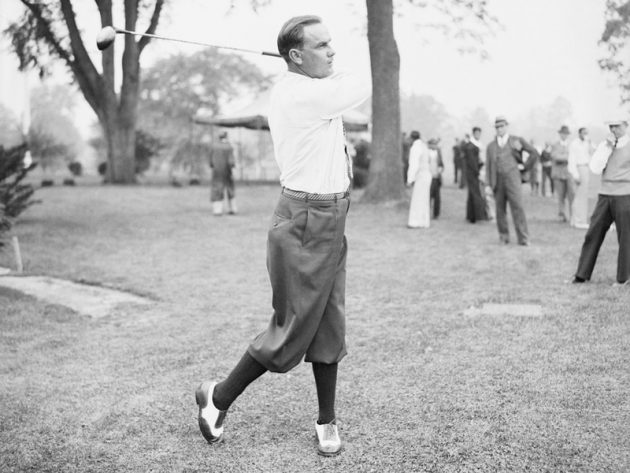
Steel shafts - Although the first steel shaft was designed by a Scottish blacksmith called Thomas Horsburgh back in the 1890s, it wasn’t until the 1920s that they began to find favour.
Subscribe to the Golf Monthly newsletter to stay up to date with all the latest tour news, equipment news, reviews, head-to-heads and buyer’s guides from our team of experienced experts.
The steel shaft was made legal by the USGA in 1924 then by the R&A in 1929.
A British fishing rod manufacturer, Apollo, designed a steel shaft in the early 20s and by 1929 True Temper had developed the first step-shaft that tapered to fit into the clubhead.
Early steel shafts were painted to look hickory to help golfers make the transition.
Billy Burke was the first Major winner to use steel shafts – He did so in the 1931 U.S. Open.
1930s

Gene Sarazen’s sand wedge – Sarazen didn’t actually invent the sand wedge as popular belief would hold, but he did create something that was very much the precursor to the modern sand wedge we recognise today.
It’s quite a story – he came up with the idea while being taught to fly a plane by the eccentric millionaire Howard Hughes.
Sarazen noted how the tail of the plane moved downwards on take-off and he began to experiment with adding weight to the sole of his "niblick."
"The Squire" found it helped get the ball up and out of sand and he used it to great effect in winning the 1932 Open Championship at Prince’s.
1940s
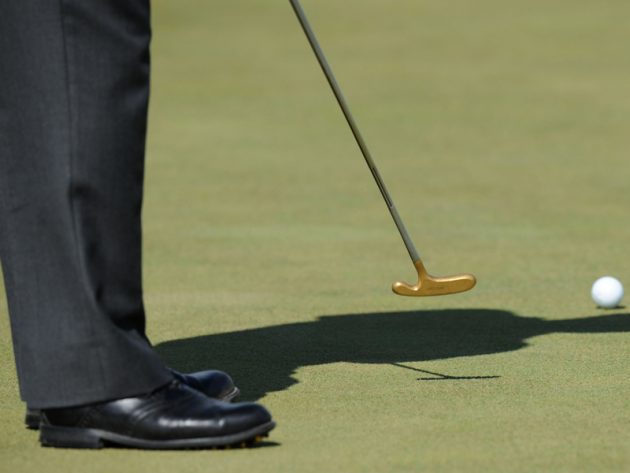
The Bulls Eye putter – This became one of the most recognisable putters of the 20th century and was used by a number of famous tournament winners including Bob Charles, Johnny Miller, Tom Kite and Corey Pavin.
But the putter dates from the 1940s when John Reuter, a teaching professional from Phoenix Arizona, came up with the concept of designing a putter that “swung like the pendulum of a clock.”
Reuter’s first models, “the sweet strokers,” were adapted and given a new name: “Bulls Eye.”
In 1951 Lou Worsham won the Phoenix Open with a Bulls Eye and, with that, Reuter’s putters had the attention of the golfing world.
1950s
MacGregor Tourney irons – MacGregor was a dominant force for a period of the mid 20th century and their Tourney irons were used by a significant number of Major winners.
The MacGregor Tourney MT was introduced in 1950 and this is what MacGregor president of the time Henry Cowen had to say about them:
“These new irons are more compact, easier to use and are designed to help the game of the average player.
All possible weight has been placed where it will do most good – on the back of the blade, directly behind the hitting area.
Tests have shown that the added weight at this point enables the ball to be hit longer than any other conventional iron.”
It sounds like a features and benefits description of a modern club!

1960s
Ping Anser putter – The idea for the Anser came to Karsten Solheim in a flash of inspiration.
So sudden was the brainwave that he had to sketch the design on the nearest thing to hand: the dust jacket of a long-playing record.
The name came from Karsten’s wife Louise who suggested it was the “Answer” to putting.
In order to fit the name on the back of the blade the w was left out, hence: Anser.
With perimeter weighting, a cavity back and a low centre of gravity, the putter set new standards in design and Ping continues to refine and innovate the Anser.
George Archer was the first man to win a Major with an Anser at the 1969 Masters.
Fred Couples, Seve Ballesteros, and Mark O’Meara have all tasted Major success using one.

1970s
Taylor Made “Pittsburgh Persimmon” - Although manufacturers had experimented with metal heads in the past, the real breakthrough came in 1979.
Club maker Gary Adams created a 12-degree cast stainless-steel driver and called it Taylor Made, nicknamed Pittsburgh Persimmon.
Tour players quickly adopted the club and in 1981 Ron Streck was the first man to win with one in his bag.
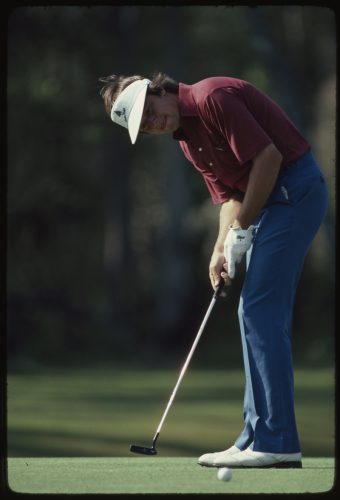
Metal drivers became increasingly popular from them and would eventually replace wooden heads completely.
1980s
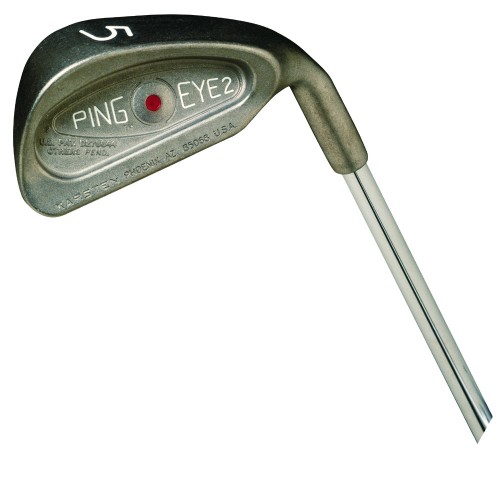
Ping Eye 2 irons – The first Ping Eye irons were introduced in 1978 with an eye shape in the cavity to improve feel.
Four years later the Ping Eye 2 irons were introduced, featuring significant improvements.
Through the 1980s, these clubs set the standard in the design of cavity backed irons.
1990s
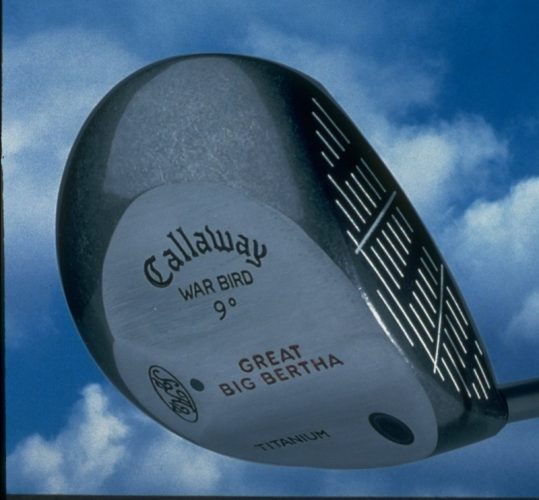
Callaway Great Big Bertha – Titanium had been experimented with by other manufacturers, but it was Callaway that put the material front and centre with its iconic Great Big Bertha driver.
Allowing for an oversized head and a powerful face, the material changed the game considerably.
Thanks to titanium, the driver has gone from being the hardest club in the bag to hit, to one of the easiest.
2000s

Titleist Pro V1 golf ball - In the mid 1990s Titleist led the way in providing performance balls with their Professional and Tour Balata wound models.
But they were always innovating and towards the millennium, they had experimented with a number of prototype multi-component balls.
By early in 2000 the experts at Titleist had singled out one of those prototypes and earmarked it as having particular potential.
It had a solid core, a suryln casing and urethane cover featuring a 392-dimple icosahedral pattern.
In testing, the feedback from the pros was outstanding and they wanted to put it in play as soon as possible. Titleist needed to give the ball a name to get it onto the USGA’s conforming balls list; they quickly came up with Pro V1 – Pro being professional, V being the urethane veneer and 1 because it was the first.
It was a temporary lab name that would be changed, or so they thought… When the guys at Titleist told the pros the “temporary” name, they liked it and it stuck.
The Pro V1 golf ball is the most successful single piece of golf equipment in the history of the game.
2010s
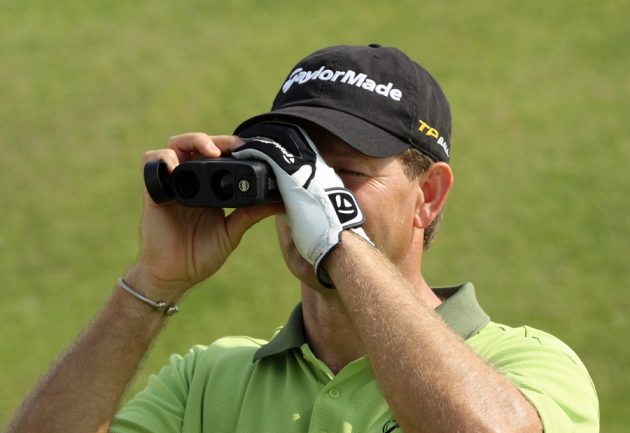
Distance measuring devices (DMDs) – They had been around before 2010 but last decade was the one in which they became ubiquitous.
By the end of 2019, almost every golfer has some sort of DMD whether it’s a GPS unit or a laser rangefinder.
Laser rangefinders work simply by pointing at a target, bouncing a laser off it and noting the yardage.
GPS units can be handheld, attached to a bag or worn as a watch.
The 2020s have just started and golf is unfortunately on hold due to the Coronavirus crisis but no doubt we’ll see golfing technology continue to advance this decade with many exciting innovations to help us play better golf still to come.

Fergus is Golf Monthly's resident expert on the history of the game and has written extensively on that subject. He has also worked with Golf Monthly to produce a podcast series. Called 18 Majors: The Golf History Show it offers new and in-depth perspectives on some of the most important moments in golf's long history. You can find all the details about it here.
He is a golf obsessive and 1-handicapper. Growing up in the North East of Scotland, golf runs through his veins and his passion for the sport was bolstered during his time at St Andrews university studying history. He went on to earn a post graduate diploma from the London School of Journalism. Fergus has worked for Golf Monthly since 2004 and has written two books on the game; "Great Golf Debates" together with Jezz Ellwood of Golf Monthly and the history section of "The Ultimate Golf Book" together with Neil Tappin , also of Golf Monthly.
Fergus once shanked a ball from just over Granny Clark's Wynd on the 18th of the Old Course that struck the St Andrews Golf Club and rebounded into the Valley of Sin, from where he saved par. Who says there's no golfing god?